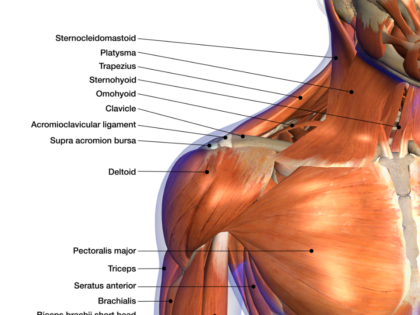I didn’t have my seat belt on. Do I still have rights?
I didn’t have my seat belt on. Do I still have rights?
In writing this article, we want to make it clear that as personal injury lawyers we see the devastating impact of transport accidents every day. Wearing a seatbelt is not only law but reduces the risk of injury or death in a transport accident.
In our work however, sometimes we meet people who have avoided seeking legal advice in this scenario, thinking they may be excluded from entitlements under the Transport Accident Scheme altogether. This article is intended to provide information for people in those circumstances and to explain how their entitlements are impacted. It is important that access to entitlements and medical treatment is understood, as the Victorian Transport Accident Scheme is there to assist those injured in transport accidents.
Entitlements
When a person is injured in a transport accident and not wearing a seatbelt, they are still entitled to compensation in accordance with the Transport Accident Act 1986 (Vic) including the following:
No Fault Entitlements
No Fault entitlements payable by the Transport Accident Commission (TAC) include:
- Medical and Like Expenses
- Income Benefits
- Impairment Benefit
Common Law Rights
Prior to being able to claim Common Law Damages, the injured person is required to first establish that their injuries meet the definition of serious injury.
In a claim for damages under the Transport Accident Act, Common Law damages are payable for pain and suffering and economic losses. Medical and like expenses are not typically able to be claimed and are usually preserved following an award of common law damages.
A serious injury can be proven by establishing a permanent whole person impairment of 30% or more in accordance with the AMA Guides 4th Edition; or
Demonstrating a serious injury via the “narrative test”. The narrative test defines serious injury as:
- Serious long-term impairment or loss of a body function; or
- Permanent serious disfigurement, such as scarring; or
- Severe long-term mental or severe long-term behavioural disturbance or disorder; or
- The loss of a foetus.
Initial application via the narrative test is made to the TAC. Should the TAC deny the serious injury application, a court proceeding is able to be issued to request a County Court Judge to grant leave to the injured party to proceed with the claim.
Negligence
In order to successfully demonstrate negligence, the injured person would need to establish that the accident was due to the negligence of another party. Negligence is established when a party other than the injured person has failed to take reasonable care for the safety of the injured person and that failure is a cause of the injured person’s injury.
Circumstances where negligence is typically established in a transport accident can include the failure of a driver to take reasonable care for the safety of others; the failure of a council or roads authorities to take reasonable care of roads, or road related areas; and the failure of animal owners to keep animals secure and off the roads.
For the purpose of this article we will referred to the negligent party as the Defendant. Depending on the circumstances of the accident, the Defendant is usually insured by the Transport Accident Commission or in some cases, another insurer.
Where the failure to wear a seat belt becomes relevant is in the defence of a Common Law claim. There are two possible arguments the Defendant may raise:
- Voluntary assumption of risk (a complete defence); or
- Contributory negligence (which may reduce a person’s entitlement to Common Law damages but not defeat it altogether).
Voluntary Assumption of Risk
The Common Law has a principle that a person who has voluntarily assumed the risk of the particular injury, will not be entitled to Common Law damages.
History shows however, that this is a particularly difficult defence to establish, and it is more likely that an entitlement to damages will remain. Put more simply, it is unlikely that the failure to wear a seatbelt will result in a complete defence, but rather, a reduction in damages by reason of contributory negligence.
Contributory Negligence
Contributory negligence is a live issue in transport accident claims when the injured person is unrestrained. In order to establish contributory negligence against an injured person, the defendant carries the onus of proving that:
- The injured person was unrestrained; and
- The injured person’s failure to be restrained amounted to a failure to take reasonable care for their own safety; and
- That the injured person’s failure to take reasonable care caused their injuries to be worse than what they would have been if they were restrained with a seatbelt.
At Fortitude Legal we have been involved in claims where the negligent party has not been able to establish one or all of the above points.
-
Whether or not you were wearing a seatbelt is disputed.
Where the defendant asserts that the injured party was not wearing a seat belt but that is disputed, evidence could be relied upon including:
- evidence of another traveler or a first responder that can say that the injured person’s seatbelt was in fact on;
- photographs of the injured person showing bruising caused by the seatbelt.
-
Whether the insured person’s failure to be restrained amounted to a failure to take reasonable care for their own safety.
Where a vehicle is fitted with a seatbelt and the injured person failed to wear it, it is likely that this element would be proven.
Please note however that there are exceptions. For instance, circumstances where the vehicle that the passenger is travelling in is not required to be fitted with seatbelts including:
- Some Buses
- Trams
- Classic vehicles that may not be required to be retrofitted
Further, a vehicle user may not be required to wear a seatbelt in circumstances where they have received medical certification that states that because of medical unfitness or physical disability, it is impractical, undesirable or inexpedient that the person wear a seatbelt.
In these circumstances, an argument about failing to take reasonable care for their own safety would be unlikely to succeed.
If a person does not have the ability to make reasonable decisions in the interests of their own safety, they will probably also not be impacted by a reduction for contributory negligence. An example may be a young child/infant.
-
That the injured person’s failure to take reasonable care caused their injuries to be worse than what they would have been if they were restrained with a seatbelt.
It is very clear that wearing a seatbelt is generally the best way to avoid serious injury in the event of a collision. The defendant does however have to prove in case that a failure to do so was causative of more serious injuries. Whilst it is often the case, there may be an exception where the failure to wear a seatbelt was not causative of greater injury. Each case turns on its facts.
The law surrounding unrestrained motorists is not straight forward and there are many considerations in the Common Law when determining the impact of being unrestrained on an injured person’s entitlements.
If you have a query in relation to a TAC claim, please contact our expert Transport Accident Team for a no obligation chat on 1300 020 618.






































